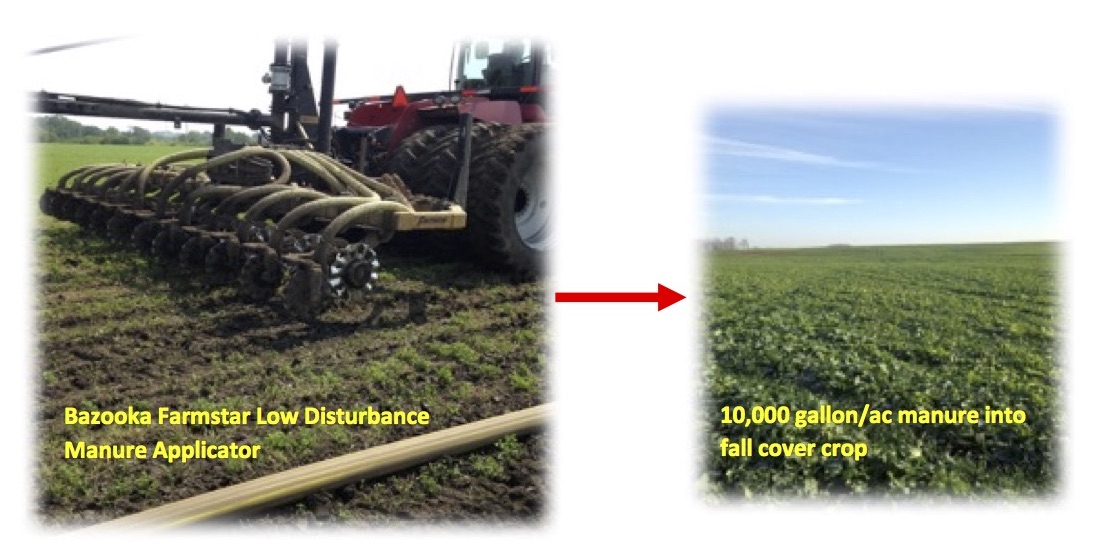Much like conservation tillage practices, the goal of low disturbance manure application is to minimize the physical disturbance of the soil. Unlike traditional applications, where the manure is incorporated by cultivating the land, low disturbance manure applications either consist of broadcasting or surface application. However, surface application is susceptible to nutrient loss through surface runoff. Therefore, it is recommended that transitioning producers, who have yet to establish the full benefits of improved soil infiltration, try manure injection, a new technique that injects the manure directly into the soil. This method helps reduce the risk of nutrient loss through surface runoff; however, it does disrupt the soil more than surface application. Fox Demo Farms is working with producers to identify which of these practices is best suited for northeast Wisconsin.
- Manure injection is a low-disturbance system which places all of the manure below the soil surface, so it offers the same benefits of incorporation, without the harmful effects of tillage-based practices.
- In October, 2016, Brickstead Dairy experimented with the Bazooka Farmstar low disturbance manure applicator in a diverse mix of cover crops. As the video describes, by injecting the manure directly into the soil, rather than broadcasting, we are giving the cover crops a greater opportunity to keep the manure in place, so it stays on the field and out of our waterways.






